12 Different British Birds of Prey (Common & Rare)
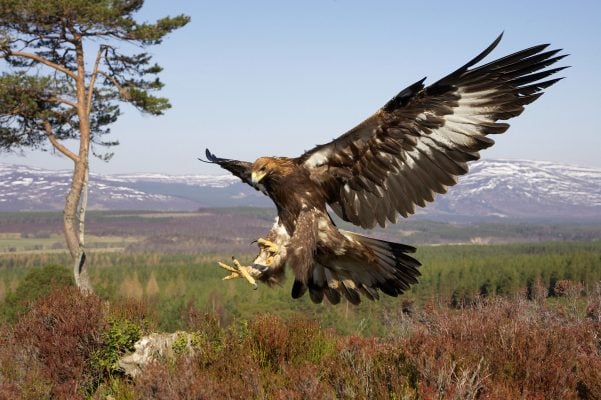
Table of Contents
Raptors, also known as Birds of Prey, include species of birds that hunt and feed on vertebrates that are larger relative to the hunter. These Raptors have keen eyesight, sharp talons, and curved beaks making them voracious and hugely impressive predators.
Their sharp eyesight helps them detect food from a distance or during flight, strong feet equipped with talons helps them in grasping and killing prey and sharp, hooked beak for tearing flesh and breaking bones of the prey. Apart from these, they have brilliantly graceful flying skills with a designer tail and ability to use thermals, the wind and slinkiness to survive.
These Birds of prey have been living since ages, but their number has reduced through years. Major reasons behind this fall of numbers are hunting, habit displacement, environmental changes, and several other reasons. But since then, efforts have been taken like banning the use of DDT, changes in altitude; protective legislation and tireless efforts of social and wildlife workers in growing their numbers and range to reestablish the wildlife.
Have you ever spotted a bird of prey? There are so many varieties of them that you may spot, but it can be difficult to know exactly which species you have seen. This article can come handy, providing you some knowledge of some common and rare birds of prey and help in identifying them.
Common Birds of Prey
Eurasian Sparrowhawk
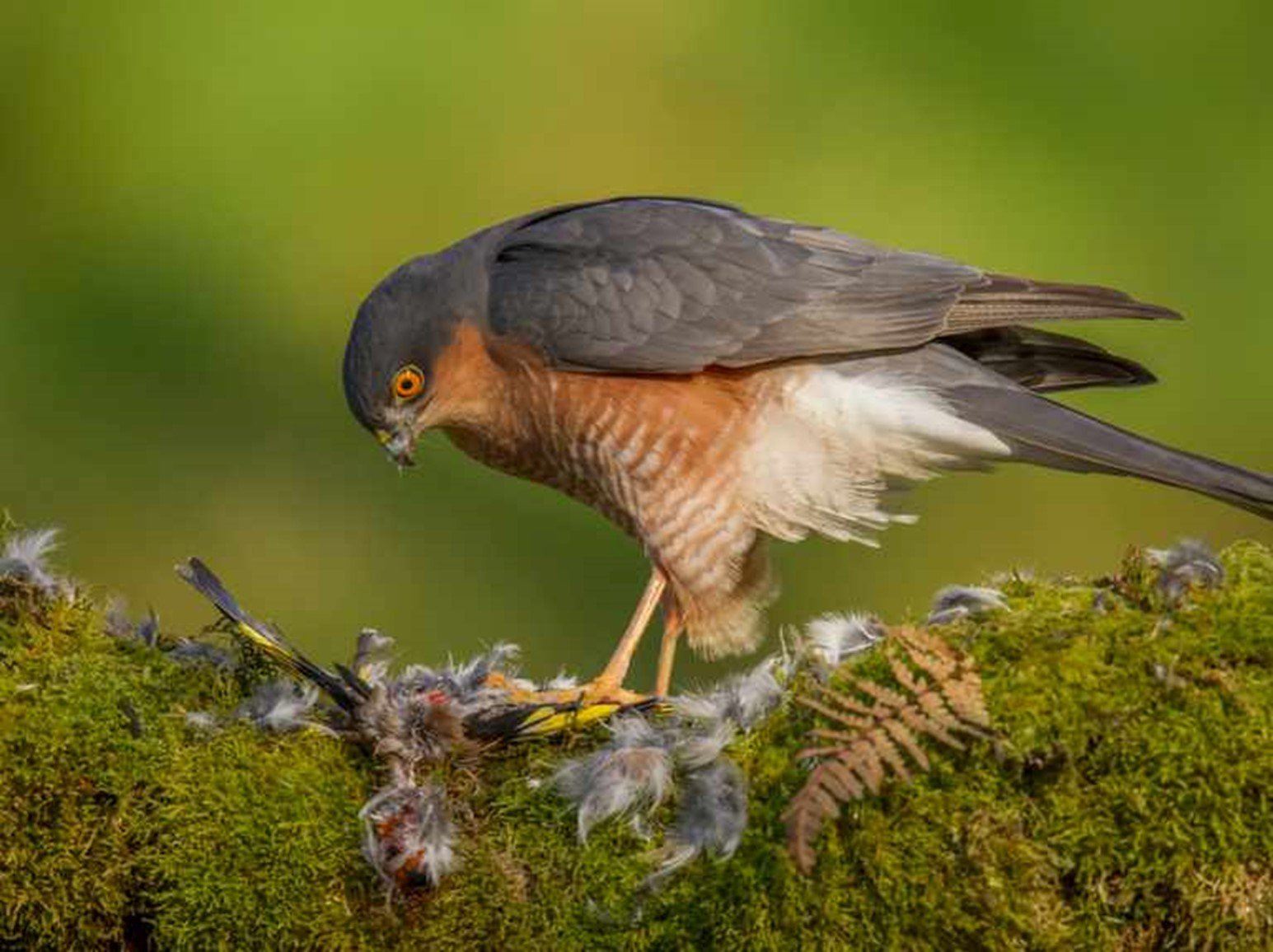
This small bird of prey is the most common type of raptors that can be found in all kinds of habitats and often visits gardens looking for its prey. These are excellent bird hunters making finches, sparrows and tits, its common prey. These are smallest birds of prey with females being larger in size than males.
These birds can be identified from their rounded wings and a relatively long, narrow tail. Both have yellow feet and eyes, with black beaks fringed with a yellow cere. They are adapted to hunting in confined spaces. Though smaller males are more agile, but female can catch birds up to the size of pigeon.
Buzzard
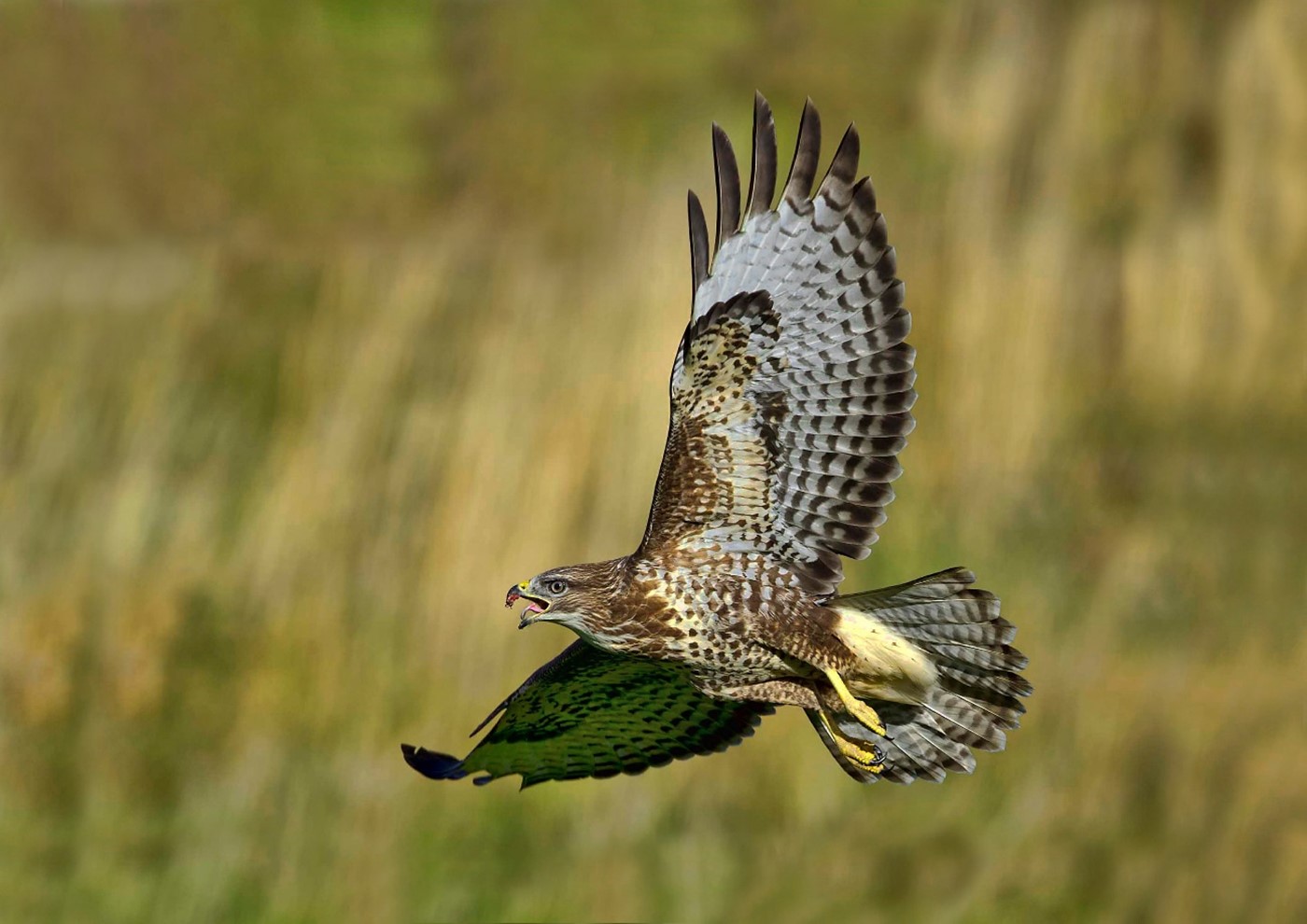
Common Buzzard is the most widespread Bird of prey found in the UK. With broad, rounded wings, a short neck and tail, these are found in the grassland, woodland, and farmland all year round.
Buzzards can be identified by their medium- sized body. They have broader wings and shorter tails than other birds like Red Kite. Their plumage can vary from a uniform dark – brown to much paler shades.
Buzzards usually feed on small birds, mammals and carrion but also eats large insects and earthworms when prey is in short supply. Nesting usually between March and May, each female lays up to five eggs at a time.
Kestrel
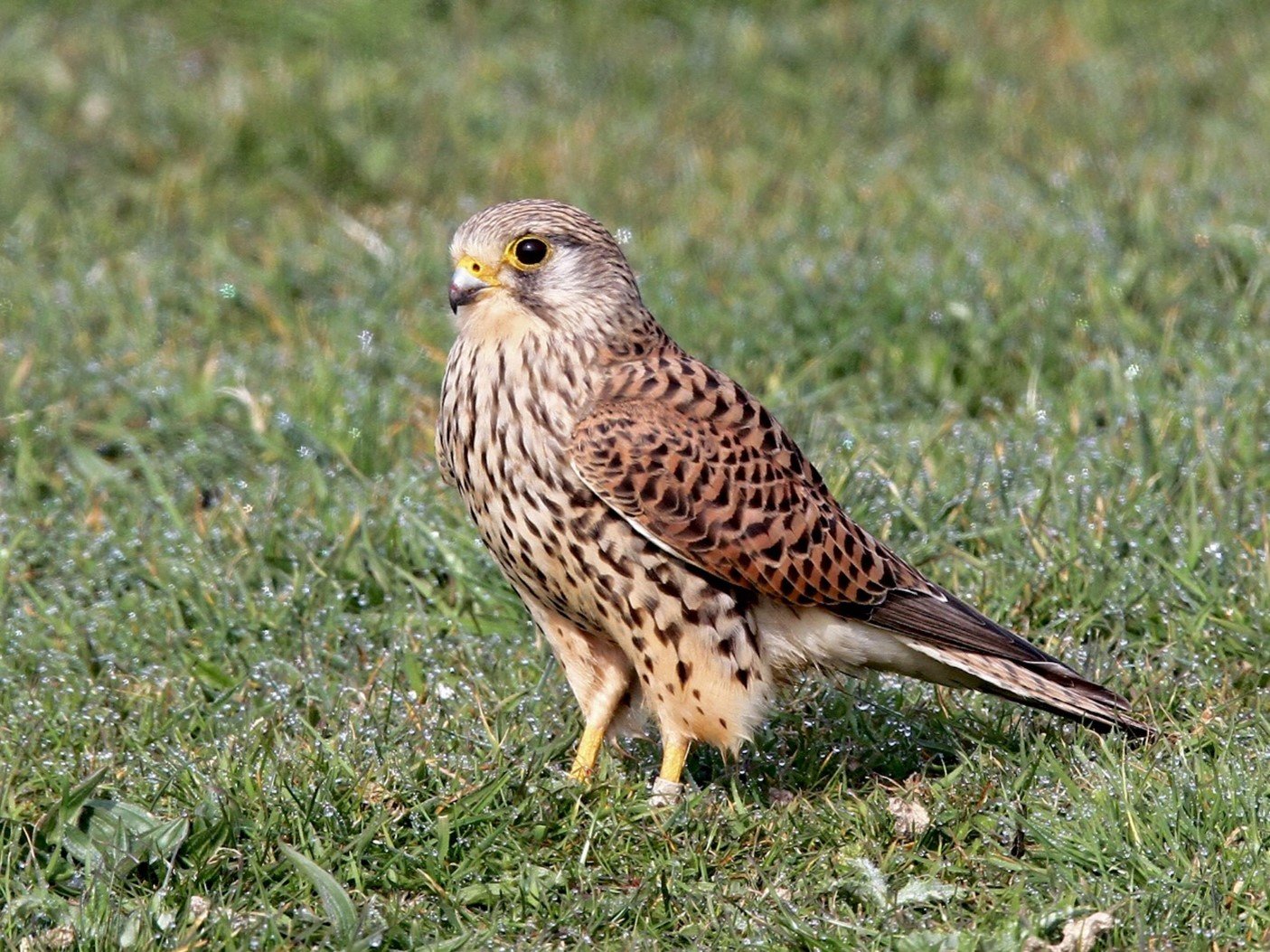
These species deserve an appreciation for their adaptability. As being the kind that can be spotted even in larger towns and urban crowd as well. They can be found in all kinds of habitat. They usually have brown colored plumage.
Kestrels can be identified by their pointed wings and long tail. While males can be identified by their grey heads and chestnut colored plumage speckled with dark brown, females are slightly larger and darker with bars and streaks instead of spots and a darker crown.
Their diet includes small mice, shrews, and voles, but they also feed on invertebrates such as beetles, grasshoppers, and worms, as well as other small birds.
Tawny Owl
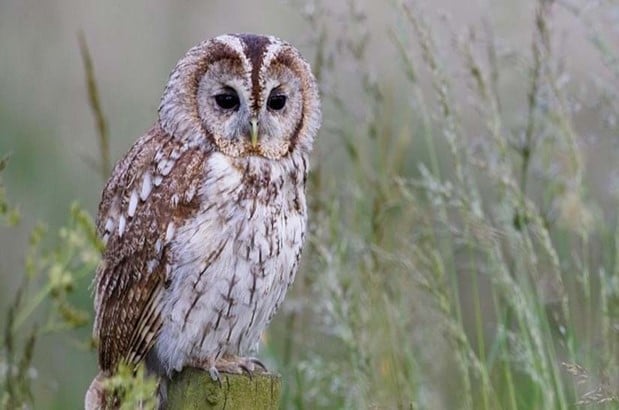
Tawny owls are another common type of Birds of prey that can be spotted throughout the British Isles. They are larger than the barn owls with and have stocky bodies topped by round heads.
They also, are darker than the barn owls and are characterized by their reddish- brown feathers. With lighter coloring of their face and mottled brown on their upperparts, they have dark eyes, pale yellow bills, and grey face.
Being nocturnal species, they hunt small mammals such as rabbits, rodents, and shrews at night-time, as well as some fish, insects, reptiles, and amphibians. They nest in abandoned nests of other birds or in the natural hollow of a tree trunk, laying up to six eggs at a time.
Barn Owl

Frequently spotted in the countryside, near farmlands and grasslands, Barn owls are the most widespread owls in the UK. Barn owls hover over the earth while scouring for prey, before diving sharply to catch the prey.
Smaller than Tawny owls in size, they are easily recognized by their white, heart- shaped faces, black eyes, and talons with pink or grey feet.61 Their diet includes woodland rodents, including rats, mice, and voles, but they also feed on small birds and amphibians swallowing their prey whole.
They breed in April and lay up to seven eggs at a time in one or two clutches per year.
Red Kite
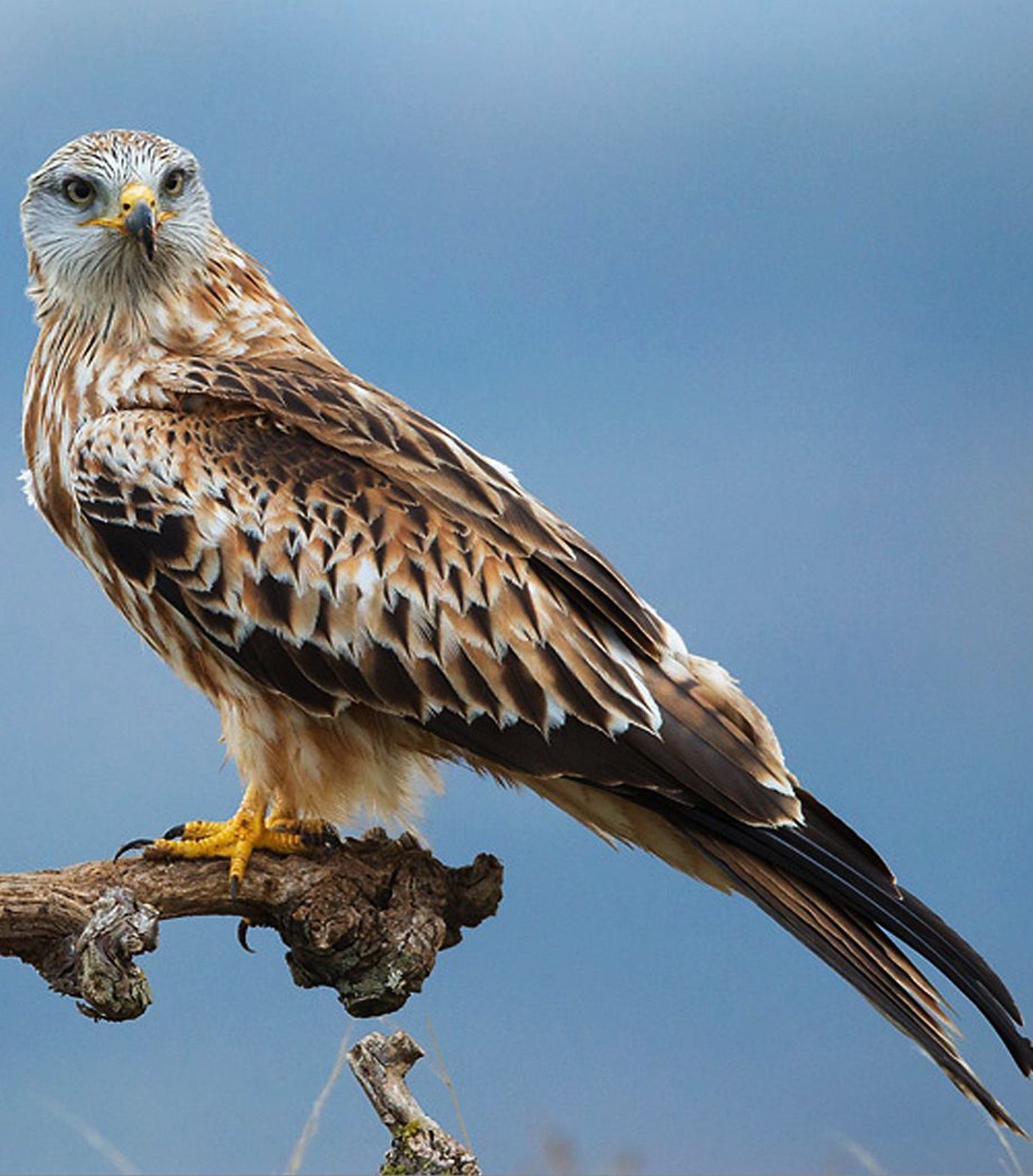
The Red Kite is the most graceful and eye- catching birds of prey in Britain. The species was on verge of extinction before it was saved by one of the longest running conservation programs, re-introducing it in England, Scotland, and Wales.
Red Kites can be identified easily. It has reddish- brown feathers with a white head and dark streaks throughout. 67Their characteristic features includes their forked tail.
They feed on wide variety of species, including mammals such as mice, shrews and weasels, birds including pigeons and magpies, as well as fish, amphibians, and worms, especially in springtime. They lay between one to four eggs at a time.
Rare Birds of Prey
Western Marsh Harrier
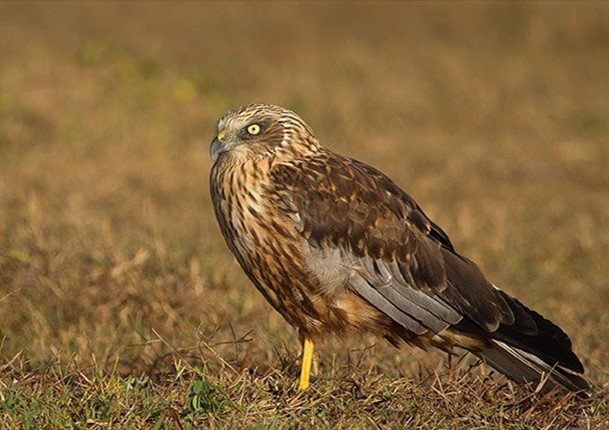
Found mainly in the east and southeast of England, Marsh Harrier is the largest of all European harriers. These are generally spotted year- round over ground or near water sources such a wetland, reed beds or marshy areas.
Their body is quiet large is size, and have a chestnut underbelly flecked with white. With rust- colored heads, their necks have dark brown streaks and bluey- grey wings.
Their diet includes frogs, lizards, and snakes while they also feed upon smaller birds and mammals. They breed at the time of April and lay up to eight eggs in their nests crafted atop a reed bed.
Golden Eagle

One of the largest birds of prey, the Golden Eagle occasionally chase other birds in flight. The most common sightings of this rare species occur in Scotland or isolated parts of northwest of England.
They can be easily recognized by the sheer size of their body. Their broad wings can reach two meters when fully extended. Their body is in various shades of dark brown and face in slightly lighter shade of brown. The feet are yellow in color with strong, curved talons.83
Their feed includes all types of creatures, from mice, rabbits and lizards to foxes, snakes, and wildfowl. Breeding in the month of May, they use the same nest. They normally yield two eggs; they can lay up to four.
Osprey

Osprey, also called as Sea Hawk, River Hawk and Fish Hawk, is a fish-eating bird of prey. It is a large raptor and can tolerate a wide variety of habitats.
It is diurnal and has brown upperparts and greyish head and underparts. Ospreys have adapted with reversible outer toes, sharp spicules on the underside of toes, backward facing scales and closable nostrils to suit its piscivorous lifestyle.
Their 99% of diet includes fishes, but they also prey on rodents, rabbits, hares, and other birds.
HEN HARRIER
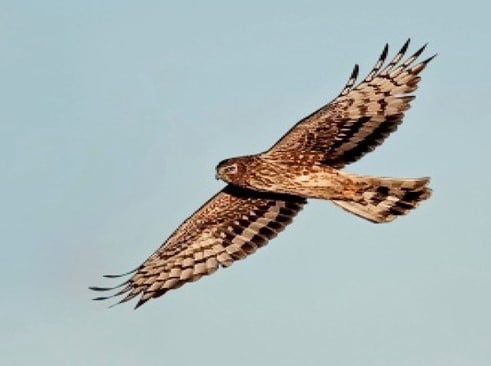
Hen Harries are smaller and rarer birds of prey. They prefer open moorland with little vegetation. Males and Females are easily distinguished based on their appearances. Males are with dark grey heads, bluish- grey feathers while females have brown heads and golden-brown upper feathers. Both have same, yellow-colored eyes, beak, and feet.
Hen harriers practice polygyny, meaning that one male may have several female mates. They lay up to four eggs at a time and feed mostly on small mammals. Although their diet also includes eggs, birds, insects, and reptiles.
Short- Eared Owl
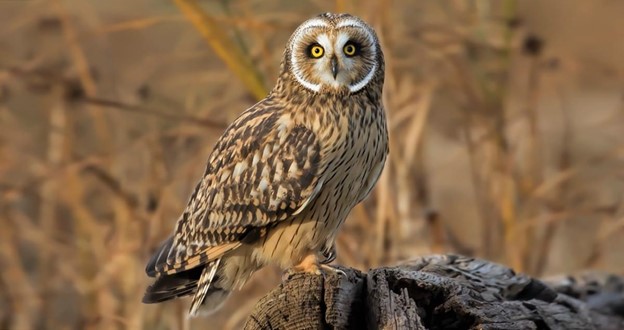
This widespread grassland species is also known as eared owls as they have tufts of feathers resembling mammalian ears. They have large eyes, a big head, a short neck, and broad wings.
They have characteristic floppy flight due to their irregular wingbeats. The females are larger than the males. They attain sexual maturity at one year and breed in the month of April.
Merlin

Merlins are small species of Falcons. They are more robust and heavily built. They show sexual dimorphism which allows males and females to hunt on different prey animals. Females are also slightly larger than the males.
They are swift fliers and skilled hunters specialized in preying on small birds. Merlins inhabit open countries such as willow or birch scrub and can be found from sea level to the treeline preferring medium-height vegetation. Their breeding season is typically in May or June and they lay around six eggs at a time.
